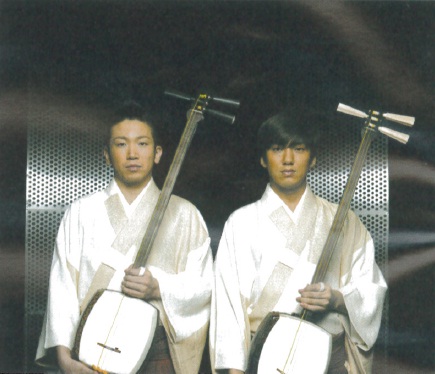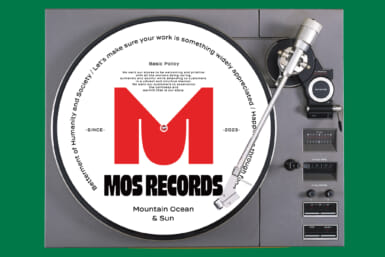Ian Priestley uncovers Japanese ethnic music at its best
Listening to local radio or watching TV, you would be forgiven for thinking that Japan had no music culture of its own. The teen idols and rap groups seem to have been cloned from the chromosomes of Britney Spears and the Beastie Boys.
Like everything in Japan though, head off the beaten track and things become more interesting. A little exploration uncovers a surprisingly rich ethnic music scene, which, despite having its roots fixed firmly in the past, has continued to evolve.
If you want to hear the best in Japanese ethnic music, you must literally head away from the main Honshu hubs of Kansai and Kanto to the geographical fringes of Japan. From the Okinawan Islands in the south to Aomori and Hokkaido in the north.
Okinawa has a musical tradition to rival that of any place in the world. Its folk music captures that same joy of life that you associate with African and Latin music. The sanshin, a three-stringed, snake skinned relative of the shamisen (Japanese lute) drives the melodies of the raucous dance music and ballads, while hand drums, shrieks and whistles provide the rhythm. Okinawan music has, at different points in the last 20 years, drifted in and out of the mainstream spotlight in Japan and indeed the world.
In the ’70s and ’80s Shoukichi Kina had a string of hits including the classic Haisai Ojiisan and the much covered ballad Hana. He teamed up with Ry Cooder in the early ’90s. Cooder championed Okinawan music and brought it to the world’s attention as he would later do for Cuban Music in Bueno Vista Social Club. He also worked with the female band Nenes, who gave Okinawan style renditions of international songs like Bob Marley’s No woman no cry.
This willingness to adapt and integrate has kept the music healthy in a way that has not been possible with some of the folk music from mainland Japan which now seems more the preserve of festival curators and tourists. Okinawan music has stayed firmly on the streets and in the local bars where anyone is welcome to pluck a tune on a sanshin or join in a chorus.
As well as drawing from the rest of the world, Okinawan music has also had its influence on world music. If there is one Okinawan song that everyone knows, it’s that old karaoke classic by the Boom, Shima Uta, which spawned covers all over the globe.
Okinawan music has also been integrated with the world of dance and techno music, artists such as Talvin Singh have used Okinawan samples and Ryukyu Underground, a band made up of two ex-pats living in Okinawa, have created their own dance fusion “borne out of a respect for the past, while not afraid to embrace the present” as their press release states.
Far from the Ryukyu Islands, another kind of local music has also kept itself alive and achieved fame beyond its birthplace. The folk music of Tsugaru has its own version of, and its own distinctive way of playing, the shamisen. Tsugaru music is fast and frantic, the shamisen plucked as if the player had been drip-fed caffeine; the tempo perhaps a response to the cold winter nights of Aomori. The original Tsugaru-shamisen players were blind: wandering minstrels with no other means of earning a living. This was the case with the grand master of Tsugaru-Shamisen, Chikuzan Takahashi, who died in 1998.
Now, there is a younger generation of Tsugaru-shamisen masters, none more famous than the Yoshida Brothers, who you may recognize from a TV beer commercial. The Yoshida Brothers’ album Move became a big hit all over Japan and brought ethnic music to a whole new generation. They perform in Tokyo fairly frequently and their live performances, where Tsugaru music is best experienced, are not to be missed.
Further north, in Hokkaido, there is also a thriving local music scene. The Meiji era government tried to get rid of folk music, deeming it it unfit for a modern civilized nation, so the musicians fled northwards taking their knowledge and skills with them. Soran Bushi, a fisherman’s song, is a well-known example of a Hokkaido minyo (folk song) Takio Ito’s rocking version became a hit after being used as the theme song for a popular TV drama.
The original inhabitants of Hokkaido were, of course, the Ainu, and although the demise of that culture is well documented, some of their musical traditions have been passed on.
The musician Oki has recorded modern versions of Ainu songs, and his collaborations with the singer Rek Po on the album No one’s land are a unique insight into that culture and its musical traditions. Oki breathes life into those traditions, however, by fusing them with modern instruments and sounds.
So away from MTV, Japanese music is alive and kicking and well worth exploring, so next time you are in a CD store, remember… there’s more to Japanese music than Hikaru Utada.









